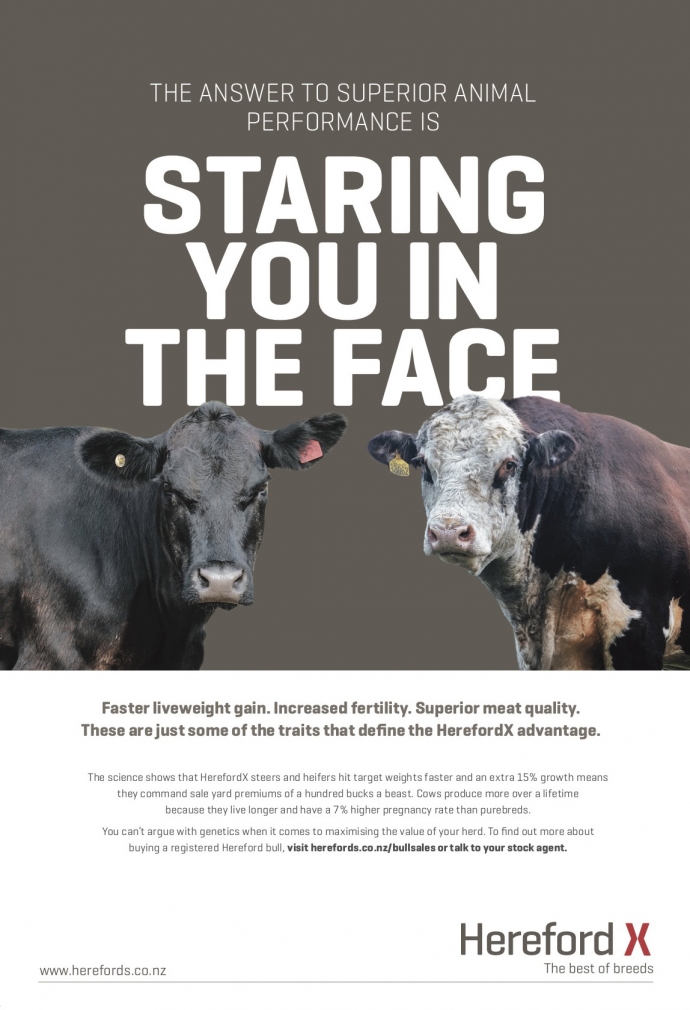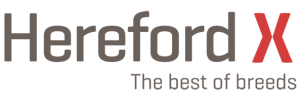Hybrid Vigour

By Dave Warburton.
The basic knowledge about hybridvigour or “heterosis” as it is more correctly known as has been around for over 50 years.
The term describes the estimated difference between the average performance of the reciprocal crosses of two breeds and the average performance of their two parental breeds.
There are two forms of heterosis: individual heterosis – the effects of crossing two or more breeds on the calf and maternal heterosis – the effects of a crossbred cow on her own performance and her calf.
The crossbred cow is without doubt the best cow around for performance.
The most commonly known attributes of the crossbred calf over astraightbred include
- superior growth rates
- superior fertility
Recently there have been a couple of new large scale studies that have identified other significant factors.
Did you know that the crossbred cow lives longer? She therefore produces more calves and therefore produces more kg weaned/cow.
| Breed Group | ||||
| Trait | Hereford | Angus | HA | AH |
| Longevity | 8.4yrs | 9.4yrs | 11yrs | 10.6yrs |
| No’ of calves | 5.9 | 6.6 | 7.6 | 7.6 |
| Weight weaned (kg) | 1093 | 1290 | 1481 | 1597 |
If commodity value was $2.10/kg for a Hereford cross weaner then the cow produces $3110.7-$3353.7 of weaner product.
Given the above total lifetime weaner weight weaned of an Angus cow, the weaner would have to attract a premium of $2.41-2.60/kg (these prices are, it’s fair to say, uncommon). If the weaner sale fair prices are even stronger then it is even tougher for the straightbred to achieve sufficient premium to match the crossbred weaner.
Did you also know that the Hereford is one of the best breeds to use in a crossbreeding programme? It has recently been discovered that because the Hereford is a long established breed that is more homozygous than most (bred from a narrow based population with the least number of other breeds introduced into the population) when you do use it in a cross breeding programme, the heterozygosity achieved is significantly better than other breeds. This homozygosity has shown up in the genomics program when searching for DNA markers.
HybridVigour has its biggest impact on the traits that are lowly heritable and therefore slow to progress in a straightbred herd. These include fertility, longevity and health.
There is also studies out there to suggest hat morbidity (number of animals affected by disease, and mortality (animal deaths) is decreased in a crossbred animal.
With the superior fertility of a cross bred female not only does she reach puberty earlier, making her ideal for yearling heifer mating, she also has a higher pregnancy rate throughout her life meaning significantly less replacements are required and an improved efficiency of the herd.
Early results from two studies in USA both show a significantly increased pregnancy rate of 7% in the Hereford Angus x female heifer compared to the straightbred Angus heifer. The ongoing effects of the maternal heterosis are being measured in the studies as the cows get older to show an accurate long term effect of the crossbred cows productivity.
President of the New Zealand Hereford Association Geof Brown of Locharburn Herefords, near Cromwell says there are a lot of black herds on NZ hill country and he says when those cows are joined with a Hereford bull the beef farmer is the recipient of a free lunch thanks to the influence of Hereford genetics.
“A Hereford bull for use over black cows must be the bull of choice for NZ farmers in coming years torealise the full potential of their beef herd.”
“Using a Hereford bull over black cows will give them the best of both breeds”
The benefits for NZ farmers don’t stop at hybridvigour. These cattle are eligible for the award winning Hereford Prime branded beef programme, Steak of Origin winner of the best branded Beef title in 2009 and proudly supplying the top end of New Zealand’s restaurant market.
Click here for full article - "Impacts of Cross-Breeding".
* Dave Warburton is a practicing veterinarian and a registered Hereford breeder.











